|
|
Post by tufta on Oct 20, 2008 7:56:59 GMT 1
Lonely Planet Releases List of Top 10 World Cities - Warsaw is among them
* Antwerp
* Beirut
* Chicago
* Glasgow
* Lisbon
* Mexico City
* Sao Paulo, Brazil
* Shanghai
* Warsaw
* Zurich
|
|
|
|
Post by valpomike on Oct 21, 2008 1:08:32 GMT 1
I think being to many on the list, Warsaw does not belong at number nine.
Mike
|
|
|
|
Post by nancym on Nov 4, 2008 17:48:10 GMT 1
I wonder what criteria LP used to choose those cities. They seem to be large and some (like Shanghai, Sao Paulo, Mexico City) now have reputations for being somewhat dangerous.
|
|
|
|
Post by valpomike on Nov 4, 2008 19:49:14 GMT 1
I also don't agree with this list, but we don't know why they make them up, or who makes them up, when all don't agree.
Mike
|
|
|
|
Post by tufta on Nov 5, 2008 10:34:53 GMT 1
Hi Nancy, pleased to meet you.
Yes the criteria of Lonely Planet, as far as I know, differ from those used by the majority of tourist institutions or portals. They claim the criteria are for 'advanced globetrotter' looking for unique spots, specially those bound to change. This criteria very well mirror the situation in Warsaw - Warszawa. Visuallly the city changes at the rate I could not imagine is ever possible for any city. Warsaw's atmosphere is unique - there not so much street life as in the major tourist destinations in Europe or in Poland (Krakow, Gdansk). All seem to rush and with exception of very few downtown spots there are no typical places for tourists to 'hang out', which they love (including myself when I'm a tourist). Yet when a visitor comes to Warsaw he or she soon discovers, if smart or lucky, the very rich, exuberant, social and cultural life going on here.
Mike, the list is in alphabetical order. I think Lonely Planet simply suggests what cities are worth visting. If we compare, for instance Zurich and Mexico City we'll probably see they differ very much in size, style of life and yes, most of all the general safety. But this doesn't exclude they are both worth visitin very much.
|
|
|
|
Post by nancym on Nov 5, 2008 19:45:36 GMT 1
Tufta, very interesting comments on Warsaw.
I am sure we all have different reasons for visiting cities /countries etc. Personally, I would tend to put smaller cities on my must visit list - for example, I was lucky to visit Curitiba in Brazil several years ago. Unlike the much larger cities like Rio or Sao Paulo, it was very (how should I say this?) user-friendly ... there was a large botanical garden in the center, one could walk safely through the city, interesting museum/concerts/shops ~ hmm, reminded me of Boston and Krakow.
Regarding places changing quickly - did anyone here watch (is there a thread somewhere?) the week-long CNN International program "Eye on Poland" a couple of weeks ago?
|
|
|
|
Post by Bonobo on Nov 5, 2008 21:41:08 GMT 1
|
|
|
|
Post by valpomike on Nov 5, 2008 22:17:53 GMT 1
We could not get it in my area, and don't know why.
Mike
|
|
|
|
Post by Bonobo on Nov 6, 2008 21:00:20 GMT 1
Warsaw, Poland: My kind of town
Warsaw may not have been rebuilt in the best possible taste, but the author and illustrator Jan Pienkowski loves it, warts and all.
Jan Pienkowski
Telegraph.co. uk, United Kingdom
27 Oct 2008
Why Warsaw?
It is my native city, and I lived here as a child before it was destroyed in 1944 and visited frequently as it was restored. It is the great Middle-European bazaar, on the road from Berlin to Moscow. All three of these capitals have been razed and risen again with astonishing vitality, if not always in the best possible taste. But I love Warsaw, warts and all.
What do you miss most when you are away?
My cousins and the gossip.
What's the first thing you do when you return?
Go to a café on Nowy Swiat, my childhood high street, and have a glass of tea with lemon and a slice of the famous WZ cake.
Where's the best place to stay?
The central Polonia Palace Hotel (0048 022 318 2800; www.poloniapalace. com; doubles from £56). But a lovely b&b in a good location on ul Smolna 14/7 is the Boutique B&B (829 4801; www.allbedandbreakf ast.com; £50).
Where would you meet friends for a drink?
At Café Kulturalna, in the Palace of Culture and Science (656 6281; www.kulturalna. pl) a lively, popular place in the picturesque interior of this landmark communist-era building. Alternatively, at one of the bars and cafés on Foksal, off Nowy Swiat.
Where are your favourite places for lunch?
Dziki Ryz, ul Pulawska 24b (848 0060), which serves Asian cuisine in a friendly atmosphere. Kafka Café, ul. Obozna 3, a lively coffee house near Nowy Swiat. And Freta 33, next to Rynek Nowego Miasta (New Town Square), serving light, international food.
And for dinner?
Restauracja Polska "Tradycja", ul. Belwederska 18A (840 0901; www.restauracjatrad ycja.pl) perfect for your first taste of Polish cuisine – try pierogi, game, or pork loin with prunes. Or Qchnia artystyczna in Ujazdowzki Castle (625 7627; qchnia.pl), which serves amusing, international/ national cuisine. It also has a terrace with beautiful views towards the river.
Where would you send a first-time visitor?
The Biblioteka Uniwersytecka (The University Library) at ul. Dobra 56/66, a stylish fantasy building with a garden on its roof. The views are great, and you can enjoy a delicious coffee at Czuly Barbarzynca, ul. Dobra 31, a popular coffee house and bookshop (it stocks English books as well). Also to the Palace of Culture and Science, the tallest building in Poland with a panoramic view of city.
What would you tell them to avoid?
Zamek Królewski (the Royal Castle) and evening in Stare Miasto (Old Town) in the middle of the week – it has little or no nightlife.
Public transport or taxi?
Public transport covers most of Warsaw more than adequately. In rush hour I suggest trams and the subway. Taxis are not very expensive – around 50p per kilometre.
Handbag or moneybelt?
Don't worry about pickpockets any more than in most European cities – apart from the busiest tourist places, and parts of Praga (the east side of the Vistula).
What should I take home?
Bursztyn (amber jewellery), "wódka" (Polish vodka – my favourite is Ubrówka, flavoured with bison grass) and Wedel chocolate from the Wedel Chocolate Lounge and Café, ul. Szpitalna 8.
And if I've only time for one shop?
Magazyn Praga, Zabkowska 27/31. Situated in the building of a 19th-century vodka factory, it is a fashionable modern store, featuring both Polish and international design.
|
|
|
|
Post by Bonobo on May 2, 2009 19:43:30 GMT 1
Warsaw's 85th in the world for living standard
The Warsaw Business Journal
28th April 2009
Quality of life in the Polish capital's stands just above that of Taipei and Bratislava, according to a recent ranking by consultancy Mercer.
Warsaw, which weighed in at 85th place, came behind other CEE capitals such as Budapest (74th), Ljubljana (78th) and Vilnius (79th).
According to the report, the top cities for quality of life were Vienna, Zürich, Geneva, Vancouver and Auckland.
Mercer ranked cities against New York, whose benchmark stood at 100 points. Vienna scored108.6, while Baghdad had 14.4.
According to the consultancy, "The quality of living in some of the Eastern European countries has been continuously improving. Cities such as Prague, Tallinn, Riga ... and Warsaw have witnessed positive improvements in living standards." |
|
|
|
Post by tufta on May 3, 2009 17:08:16 GMT 1
Interesting! I wonder how many square meters an average Varsovian has today? ;D
(I think the bar- chart presents the starting point , 1993?)
|
|
|
|
Post by Bonobo on May 3, 2009 19:21:59 GMT 1
Interesting! I wonder how many square meters an average Varsovian has today? ;D (I think the bar- chart presents the starting point , 1993?) Yes, but I included it without hesitation. Taking into account the growing number of people seeking work in Warsaw as well as increased number of students since 1993, do you think that enough flats and houses have been built to accomodate them all? I seriously doubt that. ;D ;D I think the living space ratings got even worse.    Well, it`s a fact that Polish apartments are rather small. That is why Budapest is ahead of Warsaw, they didn`t have to rebuild the whole country after WW2, we did and the resources were always scant under communism, they economised on living space as much as possible. |
|
|
|
Post by tufta on May 5, 2009 8:33:24 GMT 1
I think the living space ratings got even worse.    Bo, I don't know, you may be right and you may be wrong, that is why some recent data would be helpful. There are lots, and I mean lots, of brand new low-priced or even middle-priced appartment blocks in Warsaw which stand empty. On the other hand the top-price appartments are being sold in an instant. |
|
|
|
Post by Bonobo on May 31, 2009 12:30:47 GMT 1
Warsaw the Phoenix
JOURNEYS: THE SPIRIT OF DISCOVERY: There is a spirit of regeneration in the air in Poland's capital, writes Michael Moran
The Australian
May 30, 2009
AFTER being almost completely destroyed by barbarian lust during World War II, the capital of Poland miraculously revived in a wave of historicist nostalgia and selfless labour on an unprecedented scale. Poles began clearing the monumental mound of rubble that was Warsaw by hand.
More than 80 per cent of the buildings had been destroyed. In the 18th century the Venetian painter Bernardo Bellotto (who rejoiced in being mistaken for his uncle Canaletto) had painted many meticulously observed views of the city and the surrounding Vistula landscape, which were used in a careful regeneration of the original appearance of the Old Town.
The historical market place, deserted in the evening when I first came to Warsaw, is now jammed on summer evenings with white umbrellas shading beer gardens and cafes. Jazz pianists and accordion players provide a warm and intimate atmosphere.
Buildings and gardens of exquisite beauty are scattered throughout the reconstruction of the city, buildings that inspire the imagination in unexpected ways. Summer green dramatically transforms trees planted in city courtyards, parks and gardens into bowers of mysterious beauty. Warsaw becomes unrecognisable from the barren monochrome of winter. Pavilions may have fallen victim to war but the grand terraces on the forested escarpments that lead down to the Vistula remain.
In the mid-18th century the last king of Poland was the driving force behind the design of Lazienki Palace and Park. As a young man Stanislaw Augustus Poniatowski had come under the influence of the cultivated and acerbic Welshman Charles Hanbury Williams, British ambassador to Berlin and later StPetersburg.
Williams was a man of excessively contradictory traits who belonged to the rakish set associated with Francis Dashwood of West Wycombe Park, and was a member of the notorious Hellfire Club. He treated Stanislaw as a son and provided him with a cosmopolitan perspective and excellent education in matters of taste and women, encouraging (albeit for political reasons) the beginnings of his ruinous affair with Catherine the Great of Russia.
As king of Poland, Stanislaw Augustus developed into a man of refined and subtle sensibility, which was reflected in the artistic work he commissioned from the Italian architects he brought to Warsaw. He abandoned the severe Renaissance castle of Ujazdow (now an art exhibition space and excellent restaurant) and transformed the marshy ground of the former menagerie and hunting ground into arguably the finest park in Europe, Lazienki Park (Bathing Park).
Stanislaw Augustus heeded well Alexander Pope's advice to Lord Burlington to "consult the genius of the place in all." The king commissioned and entertained in lavish Italianate casini scattered among groves of closely planted trees. He did not favour English grottoes and follies but built Chinese and neoclassical pavilions, sculpture galleries, orangeries and a Turkish ballroom that resounded to convivial laughter and the harsh cry of peacocks. His obsession with theatricals and ancient Rome led him to construct a superb indoor theatre and the outdoor Theatre on the Island in the picturesque style of Piranesi.
At the heart of the park, where the formal French long water meets an English irregular lake, Stanislaw August together with the court architect Domenico Merlini developed the exquisite neoclassical Palace on the Island. It is one of the most beautiful small buildings in Europe. Here, in the late 18th century, the king created his own particular Stanislawian aesthetic by artfully merging many disparate European styles into his own design statement.
Intellectuals and artists met in the dining room for his famous Thursday dinners to lament, debate and distract themselves from their embattled nation.
I visited Lazienki Park for the first time one winter afternoon. I had walked the length of Agrykola Street over ice and frozen snow. Rows of gas lamps stood at regular intervals like immobile sentries in the vapour. Haloes shimmered around the gas mantles.
The Palace on the Island floated disembodied on the frosted lake, immaterial and mysterious. The long vistas between avenues of limes and birch, spare and bereft of green, made a delicate study in shades of grey drifting into white, the trunks contrasting in shafts of solid black. Pavilions closed up for the winter slept in deep cold. An old park keeper was draping the statues in heavy brown canvas to protect them from the temperatures, which can fall below minus 20C. I crossed the stone bridge at dusk, passing before the equestrian statue of Jan III Sobieski crushing the Turk, this bridge the scene of many battles in uprisings against theRussians.
In spring, Warsaw and the park are transformed in an explosion of new life. Chestnut trees with candles of creamy white dip into the water in the slight breeze around the palace beyond the lawns, ripples expanding and fading. Peacocks strut about and bands of gaily dressed children flit and laugh. The grass is permitted to grow long and wild and is filled with buttercups, daisies and bluebells while carp sun themselves near the surface of the ponds. A man was feeding the delicate and nervous red squirrels. "I have been doing this for years. I spend half of my pension onthem."
He had named each squirrel according to an injury it had received or a particular characteristic of its behaviour. "This one is Broken Tail and that one, the oldest, is the Pensioner."
The dense and disorientating greenery of the Warsaw summer makes the park secretive and romantic. Gondolas with golden dragons and crimson canopies are punted across the lake before the palace. The forested park is imbued with the spirit of Pan concealing hidden trysts and forbidden relationships. In leafy alcoves Polish girls carelessly sit astride their lovers in achingly erotic poses and kiss. The music of Chopin floats down from piano recitals in the rose garden on the upper terraces.
A restaurant with pink napery and dazzling glass nestles in the shade. In autumn the air glitters with golden rain, tall trees arching like a cathedral vault. Yet this Enlightenment gem was not destined to become the symbol of the city. Tall structures invariably become symbols of cities. Nothing compares in brutal physicality with that monumental creation of Stalinist paranoia and commissar prissiness, that inescapable monolith, that cake confectioner' s nightmare known as the Palace of Culture and Science.
Stalin "gifted" the edifice to Poland in 1955 from a "friendly Soviet nation" with a proud military opening ceremony accompanied by costumed representatives of the victorious medieval Knights of Grunwald on horseback. One of the tallest buildings in Europe, "Stalin's finger", as it was known, is a major piece of socialist realist art.
Many beautiful buildings that survived the war were cleared to make way for it. Entire residential villages were constructed to house the workers. The eminent Polish writer Maria Dabrowska wrote in her diary, "All of Warsaw will now lie prostrate at the feet of this monster." (Remarkably, many Varsovians have fond memories of their time spent studying or working in the numerous departments of the edifice.)
Despite the general dislike of the Palace of Culture and its associations with a period of suffering and deprivation, it has become as inescapably representative of Warsaw as the Eiffel Tower is of Paris or Big Ben of London.
There is the excitement of expansion and rebirth in the air of this newly emergent business capital. The former depressing darkness has been dispelled from the streets and the once empty highways are filled with imported new cars. Elegant Christmas decorations glitter in the picturesque lanes of the restored OldTown.
The city is regenerating itself at exponential speed with the help of the European Union and the sheer energy, ambition and humour of its inhabitants. A tall artificial palm tree has recently appeared on a central Warsaw roundabout in Jerusalem Avenue near a statue of Charles de Gaulle striding purposefully forward. The apparent incongruity of this tropical, almost Algerian, exoticism among the soulless communist buildings raises a laugh, but the palm conceals a deep and unrecognised symbolism.
The date palm is a rich source of life in the desert. Some produce fruit for almost 80 years. The new leaves that sprout from the spot where the dead fronds fall have given the tree a magical aura of indestructibility. As cars circle in their thousands, few Warsaw drivers would recognise this as a symbol of resurrection in the midst of their long-suffering city.
This is an edited extract from A Country in the Moon: Travels in Search of the Heart of Poland by Michael Moran (Granta; Allen & Unwin, $39.95).A giant flag is hanging from the Palace. It is a joke of history that European Union congress is taking place in the building which symbolised the Russo- Soviet domination over Poland.       www.tvn24.pl/11473 www.tvn24.pl/11473,2222215,0,0,1,0,montaz-flagi-unii-europejskiej-na-pkin,montaz-flagi,galeria.html wiadomosci.gazeta.pl/Wiadomosci/5,80291,6550469,Gigantyczna_flaga_EU_na_Palacu_Kultury.html?i=4
Huge EU flag flies in Warsaw city centre
thenews.pl
28.04.2009
A gigantic European flag was hung today on the Palace of Culture and Science, the most famous building in Warsaw.
The flag, which marks inauguration of the fifth anniversary of
Poland's membership in the EU, measures 33 by 36,4 meters. That gives 1200 square meters of surface and 600 kilograms of weight.
The flag is made of a special vinyl net, which does not cover Palace's windows and lets the wind blow through it.
"The flag and its installation is financed by the European Commission Representives in Poland. Its total cost is about 18,000 euro," said Rafal Rudnicki, spokesman from the EC. He added that the flag was cheaper, thanks to the Warsaw local government, which decided not to take money for advertising space on the Palace.
The flag is only a part of May's European celebrations in Warsaw.
Together with the Polish government, the EU is also organizing a "European town", which will be erected in Poland's capital on 3 May.
Six day later, the 10th annual Schuman's Parade will start on Warsaw Castle's square.
The European flag will remain in the Warsaw city centre until 10 May.
And more than two hundred artists will be performing next Sunday at 19.00 CET at …including performances by the National Philharmonic and power ballad singer from the 1980s Jennifer Rush.
|
|
|
|
Post by Bonobo on Jun 16, 2009 20:50:39 GMT 1
Warsaw serves up its history with a touch of nostalgia and a menu full of surprises
Indian Express
6/12/09
"Eskalopki cielece w pomidorach a la toklas? Modzek po polsku?" The man in a snazzy suit, moussed pony tail was taking dinner orders crisply with a fountain pen. I was hungry in Warsaw's hippest restaurant, U Kucharzy, but the name seemed too daunting. I fumbled with eskalopski… Was it a broth? A doughnut? A pate? What? Everything was getting lost without translation.
In the clamour of what was once the staid kitchen of Hotel Europejski and the forgotten hunting ground of communists, gangsters and escorts, everything is open— you can see chefs rustling up pig's knuckle in cognac pepper sauce, cooking the Polish pate and listing table reservation on a computer without a casing. There are no waiters in the white-tiled restaurant; cooks trundle their woks and knives. They mince the meat, beat the egg yolk into it while standing right next to you. The steak tartare gets ready before you can repeat eskalopki cielece….
The vegetarian in me baulked at the colossal roasted pig legs being snipped off the bones and slathered with horseradish sauce. My stomach was growling but I knew not what to eat. That was till the moussed man reluctantly agreed to dress up a salad and sauté some vegetables. "Without wine", I insisted. The man's jaw fell. In an alcohol/meat eatery, I, the vegetarian/teetotal ler was oddly placed. In Poland, men order five litres of Tyskie, the Polish ale. I was downing my salad with still, chilled water. That was the beginning in Warsaw.
It was, however, not the last time I heard of Polish ale or alcohol. Warsaw was tipsy with freedom; a day after I arrived, the nation was to celebrate the 20th anniversary of the death of communism and Soviet occupation. The Polish capital was wet and nippy, but the geraniums were blooming and the city brimmed with exuberance. I saw the statue of Polish Copernicus who decreed that the world is round, not flat; I moseyed up to streets where Pope John Paul II peered down from every wall (there are 1,400 monuments to the Pope in Warsaw); I walked by a nunnery and a 19th century vodka factory.
But in Warsaw my search was unusual —I was looking for a vial of cognac that lies buried behind a pillar in the Holy Cross Church. No, I had not jumped over the fence to Bacchus' territory, I was just looking for the heart of Fredrick Chopin, the composer, whose heart lies preserved in cognac. Chopin, who composed the intense Ballade No. 4 in F minor, died in Paris in 1849 at age 39. His last wish: That his heart be brought back to Warsaw.
As I walked up the marble steps of the church, I could hear the hum of a hymn. In the ornate church Christ stood crucified in a corner and candles were flickering at the altar, but I did not say a prayer. I wanted to hear the heartbeats of a man who composed ballades and nocturnes. On a grey pillar on a white plaque was written: Here lies the heart of Fredrick Chopin. I stood by the wall, waiting for the heartbeat to reverberate; instead I only heard the strains of the Ballade No. 4. Maybe Chopin's heart still beats in that vial of cognac. At least I heard the murmur in F minor.
"Everything in Warsaw is fake," Piotr Karpinski's voice boomed. I thought Peter had muddled his facts, but the Indophile tour guide insisted on the `fake'. I never question a guide, they always know their facts. He was right. Warsaw was completely destroyed during the Second World War, everything razed to the ground. Only two buildings survived. But when peace returned, the city was built, stone by stone, brick by brick in three years — what you see in Warsaw is a replica of the world before the bombs fell from the skies. Amidst the chore of recreating an old world, the city did not forget its bravehearts; it built the Monument to the Heroes of the Jewish Ghetto, the Tomb to the Unknown Soldier and Monument to the Katyn Victims.
But the magic lies in the Old Town, a 700-year old settlement that tells its history through the Barbican (city walls), the Royal Castle, St. John's Cathedral, the Warsaw Mermaid and the tenement houses with vibrant emulsion on their walls. There are quaint eateries and cafes, churches tucked in corners and ice cream parlours interspersed with art galleries. In the midst of ancient history is the yellow house where lived Madame Maria Curie, the first woman to win a Nobel Prize.
Wherever you go in Warsaw, you will find Stalin everywhere. The beige Palace of Culture, Stalin's gift to the city, towers over everything. "Isn't it called Stalin's nose?" I asked Karpinski. "Call it the Palace of Culture. Let's not talk and remember Stalin. I feel better without him…" It was the 20th anniversary of freedom and Karpinski certainly did not want to look back into the era of communism and all its paraphernalia. I paid heed. No Stalin talk in Warsaw.
Warsaw was cold but I borrowed the warmth from freedom's exuberance. To partake in the joy, I walked into the famous Lazienki Park and fed walnuts to finches and warblers. And before night could bring sleep, I ordered a paczki ziemniaczane z kapusta (potato doughnuts stuffed with cabbage). There was no moussed man that night to take the orders —I picked the first one on the menu. In Poland there are 366 cabbage dishes, but I was too weary to run through them all. I would go to Warsaw again. You see, there are 365 of them waiting on the menu. That's 365 good travel excuses!
Fast Facts
Where to stay: If you are looking for luxury, stay in Westin, Sheraton or Bristol. Go to www.discover- poland.pl or www.hotelsinpoland. com to search for hotel options. If you are on a tight budget, search for hostels.
What to see/do: Take a city bus tour; individual tours are also available. Go to the Old Town; do the Royal Route Excursion; head to Royal Lazienki Park to feed birds, get a bird's eye view of the city from the Roof Garden of University of Warsaw's library. Don't miss historic sites like Monument to the Heroes of the Ghetto, Tomb of the Unknown Soldier, Palace of Culture. If you have two extra days, head to Krakow, Poland's cultural capital, and Auschwitz, the largest Nazi concentration camp.
Where to eat: Folk Gospoda for traditional cuisine. U Kucharzy, the trendiest restaurant in town; Honoratka, a favourite since 1826; or sit in the Old Town Square where cafes abound.
|
|
|
|
Post by Bonobo on Jul 5, 2009 23:59:05 GMT 1
Warsaw - new means of transport. Once (before WW2) Warsaw was called the Paris of the East. Now it is the Venice of the East.   What about Iceland of the East?:  www.tvn24.pl/-1 www.tvn24.pl/-1,1608212,0,1,znowu-burze-z-gradem--intensywny-deszcz-i-wiatr,wiadomosc.html |
|
|
|
Post by Bonobo on Jul 8, 2009 21:05:06 GMT 1
Warsaw offers fig leaf to nudists
thenews.pl
30.06.2009
The capital city has decided not to legalize nudity on a Warsaw beach on the Vistula River, in an eastern suburb.
The Miedzeszyn beach is known as a naturist heaven, providing those who enjoy naked sunbathing the opportunity to escape the city's heat and catch some rays. Naturists from the web community Naturyzm.org have been appealing to make the beach legally designated for nude sunbathing, however, the city of Warsaw has decided against doing so.
As public nudity is illegal in Poland, Warsaw's nudists will simply have to continue soaking up the sun in secret.
Local residents in the suburb claim that they have been appealing to the police and city guards for years to intervene in the situation with the nude sun bathers. The daily Zycie Warszawy writes that locals do not seek to ban nude sunbathing, but simply contain it to a small area of beach.
Marek Kulasza from the city guards told the paper that they checked the area one year ago and wrote one ticket for a nudist.
"Warsaw's priorities are developing boulevards not nude beaches," stated Agnieszka Klab from the press office at Warsaw City Hall.
The city's nudists, however, simply want the opportunity to sunbathe in peace. "The idea is also that outsiders will not be shocked by meeting a naked person and nudists can relax in peace," maintains Tomek from Naturyzm.org. Tear gas, water cannon, hundreds of policemen and security guards against a few hundred desperate traders who don`t want to give up their work place, a giant steel hall in the city center. They used stones, fire extinguishers, barricades and live shields (their children) to defend themselves. Simply speaking, Warsavians have guts!
Riot at KDT in city centre
21.07.2009 12:27
Traders from the Warsaw shopping centre KDT are staging a violent protest against the forced closure of their workplace by the city government.
Retailers were supposed to leave the market-style shopping centre by today (21 July), but over a thousand sellers decided to stay and fight for their workplace.
A regular battle between traders and security and city guards is taking place at the KDT shopping centre. An executive officer from the city courts who entered the premises to take over the stalls, was pelted with stones, planks and bottles filled with water. In order to pave the way for him and throw the sellers out, security guards sprayed tear gas in the building.
The building is cordoned off by city guards and police. The sellers who are staying inside the building are calling for help through megaphones and the angry crowd gathered outside the KDT is screaming and trying to burst in. The protesters also blocked Marszalkowska, the main street in Warsaw city centre.
Traders have called the police, claiming that they were attacked by security guards but the city hall spokesman Tomasz Andryszczyk denies the allegations, explaining that it was the sellers who threatened city executives, security and city guards.
“They brought their own children to confront security guards. It is appalling,” said Andryszczyk.
KDT was to have been liquidated on 31 December 2008, when the lease contract expired, but sellers refuse to budge until their alternative location in the city’s western district of Wola, is fully built in 2011. A city court ruled that doing so is illegal and, on 21 July, city authorities decided to remove the traders from the building by force.
Warsaw City Hall is closing down the KDT market in order to build a new Centre for Modern Art on the terrain – on Plac Defilad under the Palace of Culture and Science – and increase green space. (mg/mmj)
polskieradio.pl/thenews/national/artykul112458_riot_at_kdt_in_city_centre.htmlComments
* Tadeusz Gohling 21.07.2009 14:26 What a shambles!
There should be a full judicial review on the behaviour of the city guards who used tear gas in an enclosed space containing children. Their actions almost seem a repeat of the tactics of the former riot militia ‘Zomo’ The whole episode is a scandal and the authorities should be made accountable – why didn’t the Police oversee the event?
Tadeusz Gohling
* Michael L. Dietrich 21.07.2009 15:47 It is the parents of those children who should be held accountable for willfully putting their own children in a violent situation which they themselves orchestrated. It is an all too common and completely dispicable tactic that people the world over seem to be using more and more often. They are putting their children in harm's way for the sake of sympathy. Unfortunately, there are those casual observers who automatically blame the authorities in situations such as these without taking the time to realize that they have been duped by the so-called victims. However, the traders at KDT have been planning this fiasco, and publicly stating so, for weeks. I think that the city and the police could have handled this situation in a much more effective manner had they been paying attention and had they prepared. Then again, isn't that always the case here though. Michael L. Dietrich
* David Kaminski 21.07.2009 16:39 I agree with Micheal - where are parents? Where are they? There are few people with a cause, most of them are there to make a riot including our "football fans" - they great patriots always where people need them... The city is building a new stadion for them and they paying back with such a behavior - that's just outrageus. I would put them in the cell 1mx1m to let them think what are they doing. We live in civillized world and as such we are obliged to follow the law. They are there illegaly. But the worst thing is that all this situation is manipulated by people who sit in their comfortable chairs propably right know. The executive board of KDT were hiding crucial informations from people about negotiations with city council about moving people to other localization, basicly even giving them jobs. The negotiations last over a half year. There is a rumor that interested people were frightened to not take the city proposal. In the end on the whole situation, the political opposition tries to take advantage from, (which is full of shit cause they were doing same thing -using force on illegal demostrations, not so long ago) which makes people believe they can do whatever they want. Still its stupid idea, cause i don't think they will acctually gain advantage on this, as most of the Poles are after Warsaw City Mayor - but that's not my problem. Strong goverment, country must oblige the law and if needed force it. David Kaminski
* anon 21.07.2009 17:25 bravo, mayor. their lease was up, it was time for the ugly crap to go, and end of story. anon
* Bob 21.07.2009 17:33 I will be happy to see them go Bob
* Dominic 21.07.2009 18:33 this is not the property of the traders, who are they to decide if this ugly piece of crap would stay or go! end of story Dominic
* rafi 21.07.2009 18:36 what about the people who lost there income, place of work, e.t.c? what will they do until the new place is open? comes to show you that there is no big difference between comunism and capitalism... we all know what will be the end of such riots rafi
* Dominic 21.07.2009 18:48 rafi, you're wrong there is a big difference between losing your income, place of work and taking law in your own hand if this was a place of ownership of these people, and the state took it away from them by force, I'd be on their side in this situation, they are just violent thugs who should be prosecuted for breaking the law Dominic
 See films www.tvn24.pl/-1,1610786,0,1,koniec-bitwy--wojna-trwa,wiadomosc.html     miasta.gazeta.pl/warszawa/1 miasta.gazeta.pl/warszawa/1,95190,6835114.html     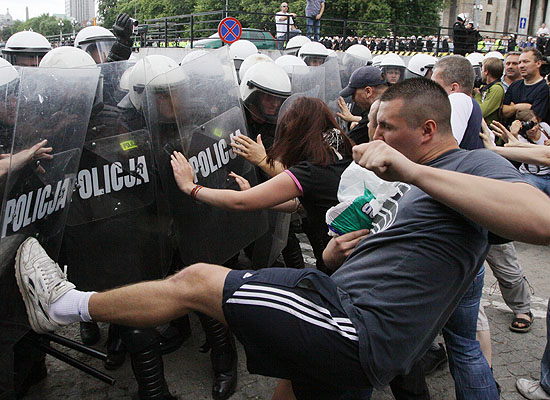 www.zw.com.pl/galeria/538 www.zw.com.pl/galeria/538,2,384208.html 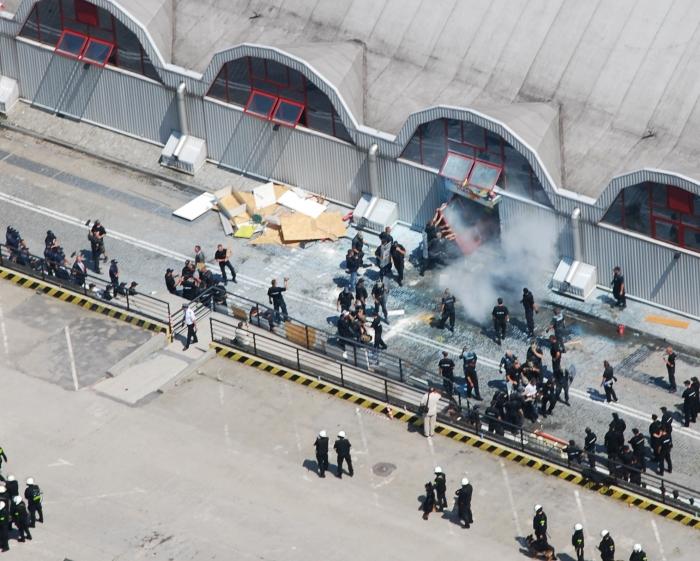   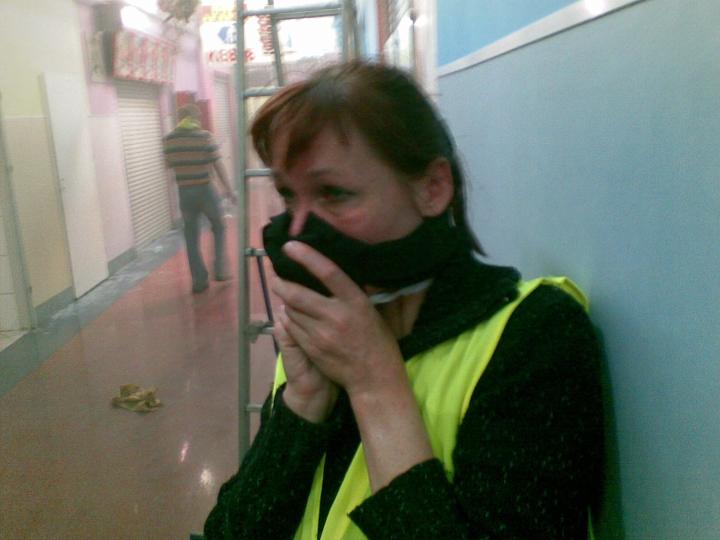 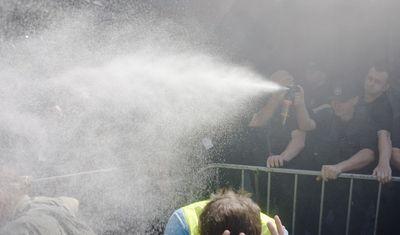  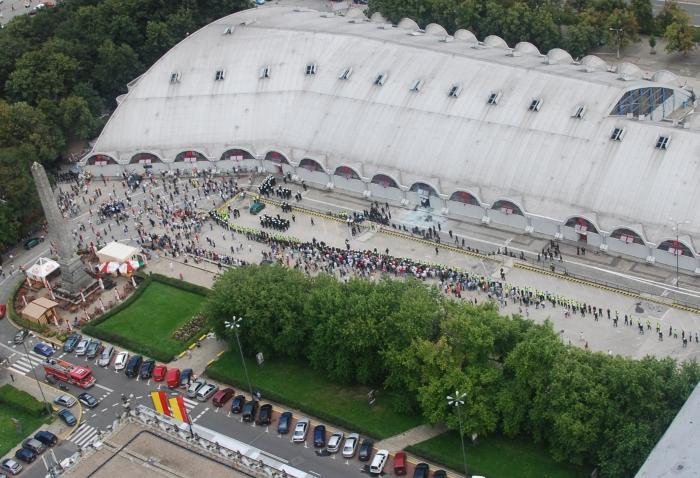 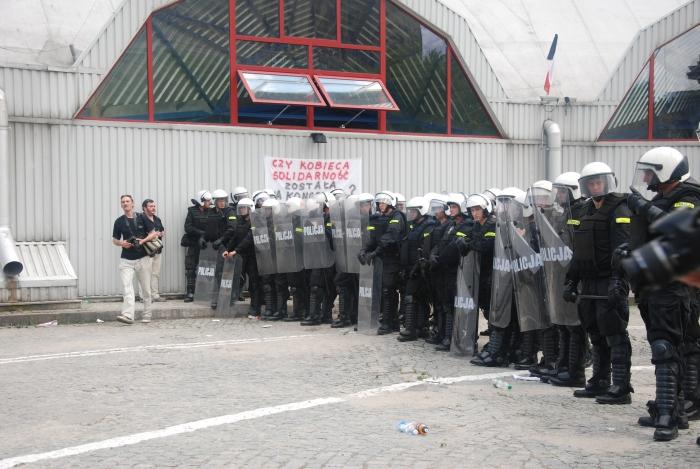 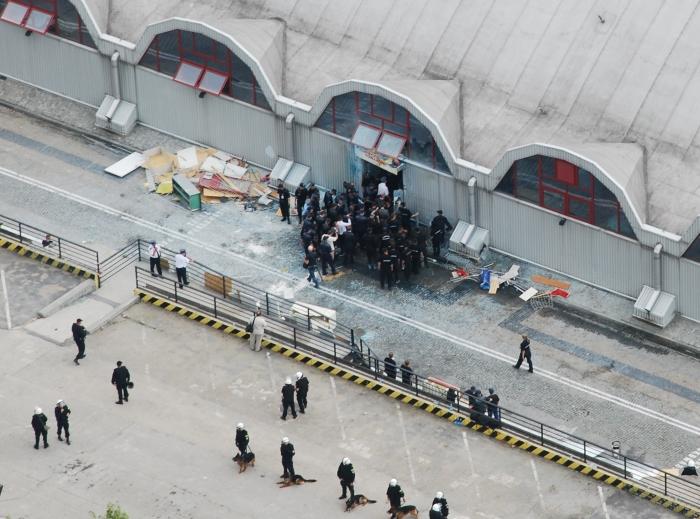 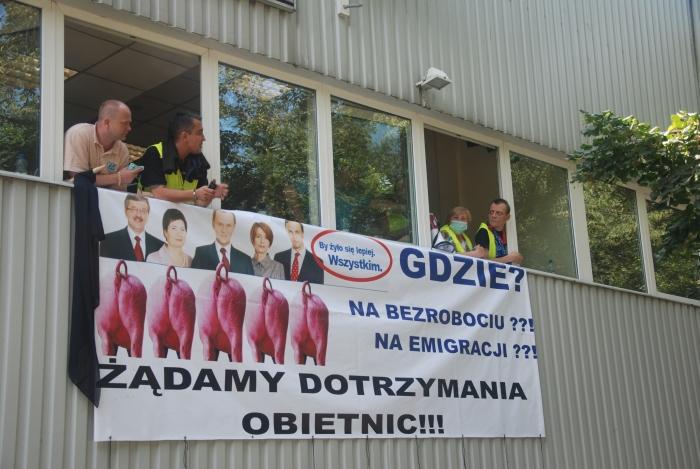 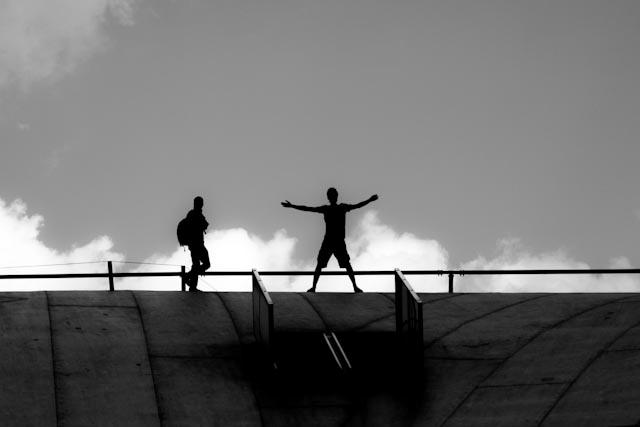 |
|
|
|
Post by valpomike on Jul 8, 2009 21:35:50 GMT 1
Many of the people who go to a nude beach, are not worth looking at anyway. Old, over weight, and ugly.
Mike
|
|
|
|
Post by Bonobo on Sept 23, 2009 20:36:17 GMT 1
Warsaw's Nowy Swiat ranks 38th among world's priciest retail streets
Polish Market
2009-09-21
Nowy Swiat in Warsaw, the most expensive retail street in Poland, has taken 38th position in the ranking of the world's 60 most expensive retail streets in a Cushman&Wakefield ranking (37th position in 2008) with annual rent of EUR 1008 per 1 sq.m. (rent rise of 2.4%).
Other high streets in Poland with prime rents are as follows:
- Gdynia – ul. Œwiêtojañska – annual rent 432 EUR/sq.m (decline of 10%)
- Katowice – ul. 3 Maja – annual rent 780 EUR/sq.m (0%)
- Kraków – ul. Floriañska – annual rent 924 EUR/sq.m (rent rise of 2,7%, the biggest rise in Poland)
- £ódŸ – ul. Piotrkowska – annual rent 360 EUR/sq.m (decline of 11,8%)
- Poznañ – ul. Pó³wiejska – annual rent 696 EUR/sq.m (decline of 3,3%)
- Szczecin – Al. Niepodleg³oœci – annual rent 444 EUR/sq.m (decline of 11,9%)
- Warszawa – ul. Chmielna – annual rent 984 EUR/sq.m (decline of 3,5%)
- Warszawa – ul. Marsza³kowska – annual rent 756 EUR/sq.m (0%)
- Warszawa – Al. Jerozolimskie – annual rent 600 EUR/sq.m (0%)
- Wroc³aw – ul. Œwidnicka – annual rent 624 EUR/sq.m (decline of 5,5%)
Katarzyna Michnikowska, Senior Analyst in the Polish office of Cushman & Wakefield, said "The global financial crisis has verified the development potential of the Polish high streets, which are adjusting their offer to consumer needs and expectations. The observed slight downward trend in rents results from the change in retail operations, growing importance of food and beverage sector and the demand fall in the financial sector. Shortage of retail space combined with high pedestrian flow volume constantly stimulate development interest, which drives down the vacancy rates and maintains rents at relatively stable levels. The urban revitalisation projects systematically implemented in all major agglomeration will also improve the retail attractiveness of the high streets."See Nowy Świat in my pics: polandsite.proboards.com/index.cgi?board=warsawcapitalcity&action=display&thread=358&page=1#4019
|
|
|
|
Post by valpomike on Sept 23, 2009 21:44:06 GMT 1
All of Poland is worth every cent for rent, a great place to live.
Mike
|
|
|
|
Post by Bonobo on Oct 10, 2009 21:03:12 GMT 1
Warsaw: a smile in the Palace of Culture and Science
Twenty years after Poles went to the polls in the first ever free elections in the Eastern Bloc, Adrian Bridge visits an old friend and historian at Warsaw's Palace of Culture and Science.
By Adrian Bridge
telegraph.co. uk
07 Oct 2009
The palace - which has more than a touch of the Empire State Building about it - was intended to be something enjoyed by the people rather than the rich and the blue-blooded'
Warsaw: There is no mistaking the great "gift" bestowed on the Polish people by "Uncle" Joe Stalin: the massive art-deco wedding cake of a building otherwise known as the Palace of Culture and Science.
For more than 50 years this towering "monument to Polish-Soviet friendship" has been the dominating feature on the Warsaw skyline, although since 1989 several glitzy high-rise hotels and office blocks have begun to challenge its pre-eminence.
The palace – which has more than a touch of the Empire State Building about it – was intended to be something enjoyed by the people rather than the rich and the blue-blooded. It contains a museum of technology, a cinema, three theatres and, its most popular attraction, a viewing platform on the 30th floor. (Some Varsovians say it has the best view in the city because you can't see the Palace of Culture and Science from there).
In an office about half way up, I arrange to meet Dariusz Stola, an old friend and historian who used to help me with journalistic assignments in the early years of change.
There is a lot of ground to cover.
"It was very hard in those first few years," he says. "Everything happened so quickly. It was a big shock to the system. We soon learned that 'freedom' isn't worth too much if there is no money in your pocket."
When I used to work with Dariusz nearly 20 years ago, you could see the shock etched on the faces of ordinary Poles completely at sea with the notion of having to take personal responsibility for their lives and livelihoods. Warsaw had a hard, brutal aspect (an inevitable consequence of its flattening following the abortive 1944 uprising, a tragic but also strangely uplifting chapter in the city's history brilliantly explored in one of the brighter post-1989 visitor attractions) .
And now? With a few notable exceptions – the magnificently reconstructed Old Town, the beautiful Lazienki park (setting for outdoor Chopin concerts in the summer); the shops and cafés of Nowy Swiat – much of Warsaw remains harsh. It will never win any beauty awards, but it does have a certain dynamism and a healthy, youthful vigour. There is a lively clubbing scene. And the city is no longer quite so grey. Buildings have been painted, advertising billboards added.
Dariusz says that economically the worst is probably over (although the current global crisis has hardly helped) and that there has definitely been a material improvement since Poland joined the European Union in 2004. Warsaw now boasts its very own caffe latte class. He looks back fondly to the day – June 4 1989 – when Poles went to the polls in the first ever free elections in the Eastern Bloc and voted out the communists.
"That's the day I became a free man," he says. "That's when I stopped going into work wondering whether I would have to betray my principles today; that's when I stopped thinking, should I emigrate?"
We glance through the window at the changing Warsaw skyline and something strikes me: Dariusz smiles a lot more than he did in 1992.
|
|
|
|
Post by Bonobo on Nov 15, 2009 22:09:02 GMT 1
Warsaw Among Wealthiest EU Regions, Provincial Poland Lags Behind
Wall Street Journal
11/3/09
As of 2007, the city of Warsaw's per-capita GDP was at 160% of the EU average, the Central Statistical Office said. If you consider that Poland will be the only EU economy growing this year, Warsaw's result is already much higher.
But even taking the 2007 statistics, if the city of Warsaw was a separate region within the European Union, it would be among the wealthiest in the entire bloc of 27 countries, on par with Ile-de-France, Stockholm or Prague.
And there's a huge gap behind Warsaw. For administrative reasons, the city of Warsaw is measured together with a much poorer belt around it (with the whole region's area larger than that of Belgium), which puts the statistical wealth of the greater Warsaw area at around 90% of the EU average.
The Lower Silesia, with the city of Wroclaw, came in second-best, with just 68% of the average GDP in the greater Warsaw area and only 36% of that in the city of Warsaw.
If you go east or southeast, the per-capita GDP will be five times smaller and that makes Poland, with the average result around 60% of the EU average, look like a poor relative of the largest economies.
But in fact Poland's average result is seriously distorted and could be compared to the average moderate warmth you'll feel if you put one hand in a freezer and the other in a stove.
|
|
|
|
Post by tufta on Nov 17, 2009 12:33:02 GMT 1
you would make kokosy teaching english in Warsaw, Bo. ;D ;D
|
|
|
|
Post by Bonobo on Nov 18, 2009 19:59:53 GMT 1
you would make kokosy teaching english in Warsaw, Bo. ;D ;D Provided I was a born Warsavian and had my own 5 room apartment with toilet. Otherwise the cost of living in Warsaw would counterbalance income higher in Warsaw compared to Krakow. |
|
|
|
Post by tufta on Nov 19, 2009 14:14:06 GMT 1
I am sure you didn\t check the prices. Or you did?
I have performed a short comparison for you
A two-click search reveals that the price of 5 room appartments in Krakow is in the range pf 400 000 to 5 500 000 zloty. Another short search reveals that in Warsaw the 5 room appartment which is well connected with downtown (read - near subway) will cost around 850 000. I didn't have time to check teh prices in the nice little sattelite town, well connected with downtown by SKM, but I believe they will be even cheaper. The choice is yours, Bo! ;D
|
|
|
|
Post by Bonobo on Nov 19, 2009 21:57:47 GMT 1
I am sure you didn\t check the prices. Or you did? I have performed a short comparison for you A two-click search reveals that the price of 5 room appartments in Krakow is in the range pf 400 000 to 5 500 000 zloty. Another short search reveals that in Warsaw the 5 room appartment which is well connected with downtown (read - near subway) will cost around 850 000. I didn't have time to check teh prices in the nice little sattelite town, well connected with downtown by SKM, but I believe they will be even cheaper. The choice is yours, Bo! ;D My apartment is worth a little more than 4. Adding other real estate (garage etc) I still wouldn`t be able to reach 8.5. One day I will, when stock market goes up. ;D ;D ;D ;D ;D ;D ;D But I am not going to move to Warsaw. I am too old for such major changes. And I am fed up with big cities. ;D ;D ;D ;D |
|
|
|
Post by tufta on Nov 20, 2009 11:17:25 GMT 1
Well, in that case no subway quaters for you. You will have to live in Praga district, Bo. ;D
|
|
|
|
Post by Bonobo on Dec 4, 2009 21:59:43 GMT 1
Europe with a dog - Warsaw, Poland
Last year we spent a fortnight in Poland exploring various areas and cities. Our small dog, Bodie, accompanied us (as always) and we found Poland to be very dog-friendly. We stayed in various locations and in various types of accommodations including an apartment in Krakow and a castle in Rydzyna.
Warsaw is a large modern city with wide avenues and a historical city center. Our hotel, the Jan III Sobieski, was easy to find largely because of its multicolored facade (getting out of the city proved to be a bigger challenge). The luxury property has 434 rooms including 46 suites. We had reserved one regular room for my in-laws and a suite for us so that Bodie wouldn't feel too cramped when we went exploring the city's museums and churches - he may be small but he's high-strung! The suite ended up being much larger than we expected with a separate living/dining room and two bathrooms. A large buffet breakfast was included in our rate and the food was excellent quality. It was a lot like a brunch-style buffet that you would see at luxury properties in the U.S. with multiple hot and cold dishes.
We were only in Warsaw a short while but we visited the Holy Cross Church where Chopin's heart is entombed (his body is buried in Paris). The church itself was beautiful and worth a stop. It is a "real" church so be respectful and quiet when visiting.
The Jan III Sobieski hotel is located on the outskirts of the Old Town on the corner of a busy intersection. Trams stop right outside the hotel making it convenient to get about. From the hotel you can easily walk to The Warsaw Rising Museum which chronicles the uprising against the Nazi's in 1944. It is a very moving museum and is highly recommended. There are plenty of shops and restaurants also in the area offering a wide range of options. We found it to be a good place to stay, especially when having a car - we didn't have to drive through the Old Town area to find our hotel.
The food in Warsaw was excellent. A block or so from the Jan III Sobieski Hotel is a small Indian place called Arti that had the best Indian food we've ever had (and we've tried a lot). A further walk - about 15-20 minutes - will bring you to a small shopping center with a choice of restaurants. We ate at Wook, a chinese restaurant with an open kitchen. The food portions were tapa-size with each dish costing 4-8 zloty (a few dollars). A very affordable restaurant that I would recommend even though they kept showing a dvd of a Toto concert.
Our trip to Warsaw was a bit brief so we plan on returning some day. Everyone we encountered was very friendly and we were able to communicate quite easily (most residents speak English - at least a small amount even though we tried speaking Polish). If you take your dog, check out Lazienki Park - a dog-friendly park (keep pet on leash) close to the city center. The park has a palace, an amphitheater, and other buildings. During the summer, the park hosts open-air concerts featuring Chopin at noon every Sunday. There are also other parks scattered around Warsaw where your dog is welcome.
Dogs are welcome on the public transportation but they must either be in a carrier or leashed and muzzled. You will also need to carry proof of rabies vaccination with you at all times (which is true for any foreign country).
|
|
|
|
Post by Bonobo on Jan 23, 2010 23:32:27 GMT 1
In one of Warsaw`s underground stations an artist painted a mural called: God`s lambs. It depicts sheep flying over the city.  The problem is the figures of animals reminded of inflatable dolls from a sexshop. Some people were shocked. Today someone damaged the painting spraying Shit, not art over it.   |
|
|
|
Post by Bonobo on Apr 7, 2010 22:07:17 GMT 1
I have never seen Warsaw Underground. Two years ago we went to museums and other places of interest instead. We even planned to go to one metro station and take a ride, but there wasn`t time.
This year we will visit it.
Warsaw Metro - fifteen years old today
07.04.2010 13:17
The Warsaw Metro is celebrating 15 years since the first train pulled out of Centrum station. Commuters are still waiting for the promised second line, however.
On 7 April 1995, the first section of the Warsaw underground, between Kabaty and Politechnika stations, was opened. It took twelve years to build the first eleven metro stations. Now the first, and so far the only, metro line, which connects southern and northern districts of the capital, is 23.1 km long and includes 21 stations. The cost exceeded 3.5 billion zloty (0.9 billion euro).
The Warsaw Metro carriages, which travel at a speed of up to 60 km per hour, transport over 520,000 citizens of Warsaw daily.
Even though the Warsaw Metro is already fifteen years old, it consists of only one line. The construction of sections of the second west-east line was scheduled to completed EURO 2012 football championships but due to the lack of financial sources it is expected to be finished only in 2016.
The second line, which will connect the city centre and Bemowo district with Praga on the east bank of the Vistula River, will consist of 22 stations. The central section, however, including Rondo ONZ, Nowy Swiat and Stadion stations, might be ready in 2013. The cost of the entire west-east line is estimated at 4.1 billion zloty (970 million euro). (mg/pg)
|
|